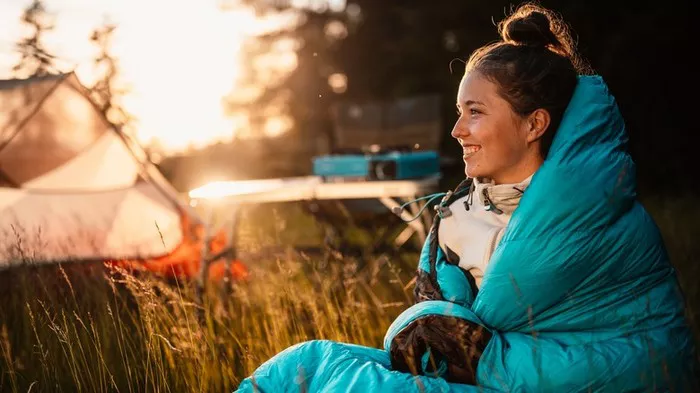Hiking is a great way to enjoy nature, stay fit, and explore new terrains. However, wearing the right clothing can make a big difference in your comfort, safety, and overall experience. For women, choosing the right hiking outfit depends on the weather, trail conditions, and personal preferences. This guide will help you understand what to wear for a successful and enjoyable hike.
Start with a Comfortable Base Layer
The base layer is the first layer of clothing that touches your skin. It plays a crucial role in regulating body temperature and wicking away sweat.
Tops
Moisture-wicking fabric is essential. Choose synthetic or merino wool tops because they dry quickly and keep sweat off your skin. Avoid cotton, as it holds moisture and can make you feel cold or clammy. Opt for a snug but not tight fit to allow easy movement.
Bottoms
Leggings or hiking pants are great options. Lightweight, stretchy leggings or durable hiking pants made from moisture-wicking and quick-drying fabrics work best. In hot conditions, hiking shorts are a good choice. Ensure they are not too short to avoid discomfort.
Add an Insulating Layer for Warmth
An insulating layer helps you stay warm, especially in cooler temperatures or higher altitudes.
Jackets
Fleece jackets are lightweight and breathable, providing warmth without bulk. Down or synthetic jackets are perfect for colder hikes, as they trap heat and are easy to pack.
Pants
Thermal leggings are ideal for cold weather and can be worn under your hiking pants for extra warmth.
Wear a Protective Outer Layer
An outer layer protects you from wind, rain, and other elements.
Rain Jacket
A lightweight, waterproof jacket with ventilation options like pit zips is a great choice. Make sure it is breathable to prevent overheating.
Rain Pants
Pack rain pants if heavy rain is expected. Look for options that are easy to slip on over your hiking pants.
Select the Right Footwear
Choosing proper footwear is essential for foot comfort and injury prevention.
Hiking Boots
High-cut boots provide ankle support, which is useful on uneven trails. Waterproof materials keep your feet dry in wet conditions. Make sure to break in your boots on shorter hikes before tackling longer ones.
Hiking Shoes
Hiking shoes are a great option for shorter or less technical hikes. They are lightweight and breathable but offer less ankle support.
Socks
Choose wool or synthetic socks to help prevent blisters and wick away moisture. Avoid cotton socks, as they retain moisture and can cause blisters. Always bring a spare pair in case your socks get wet.
Choose the Right Underwear
Comfortable underwear is a must for hiking.
Sports Bra
Opt for a moisture-wicking sports bra that provides the right level of support.
Underwear
Quick-drying, seamless underwear helps prevent chafing and increases comfort.
Protect Your Head and Hands
Your head and hands are exposed to the elements and need protection.
Hats
A wide-brimmed hat is ideal for sunny hikes, protecting your face, neck, and ears from the sun. For cold-weather hikes, a beanie keeps your head warm.
Gloves
Lightweight gloves are useful for chilly mornings or windy conditions. Insulated gloves are necessary for extremely cold weather.
Layer Your Clothing Appropriately
Layering allows you to adjust your clothing based on the weather. Start with a moisture-wicking base layer. Add an insulating layer for warmth. Top it off with a weatherproof outer layer. Remove or add layers as needed during the hike.
Dress for the Season
Your hiking outfit should match the season and weather conditions.
Spring and Fall
Wear lightweight but warm clothing since temperatures can vary. Carry a waterproof jacket in case of rain.
Summer
Wear breathable, lightweight fabrics. Opt for shorts or capris and a moisture-wicking t-shirt.
Winter
Dress in multiple layers to stay warm. Include thermal leggings, a down jacket, and insulated gloves.
Accessorize for Functionality
Accessories can enhance your hiking experience and provide added protection.
Backpack
Choose a well-fitted backpack with enough space for water, snacks, and extra layers.
Sunglasses
Protect your eyes from UV rays, especially on sunny or snowy hikes.
Buff or Neck Gaiter
Use it to protect your neck from the sun, wind, or cold.
Hiking Poles
Hiking poles help with balance on uneven trails and reduce strain on your knees.
Pack Smart
Always be prepared for changing conditions. Carry a rain jacket or poncho, extra socks, a hat or beanie, gloves if needed, sunscreen, lip balm, and a first-aid kit.
Tips for Choosing Hiking Clothes
Test your outfit by wearing it on a short walk to check for comfort. Prioritize quality by investing in durable and functional gear to ensure safety and comfort. Always check the weather forecast and pack accordingly.
Final Thoughts
The right clothing can make your hike more enjoyable and comfortable. Focus on wearing moisture-wicking, quick-drying fabrics and layering your clothes to adapt to changing conditions. Remember to protect your head, hands, and feet to ensure an all-around safe and pleasant hiking experience. Whether you are tackling a challenging trail or enjoying a casual walk in the woods, dressing appropriately will set you up for success.
Related topics:
- How Do You Get Down Half Dome?
- What Do Women Wear Hiking? A Comprehensive Guide
- What Are Good Hiking Shoes for Women?

